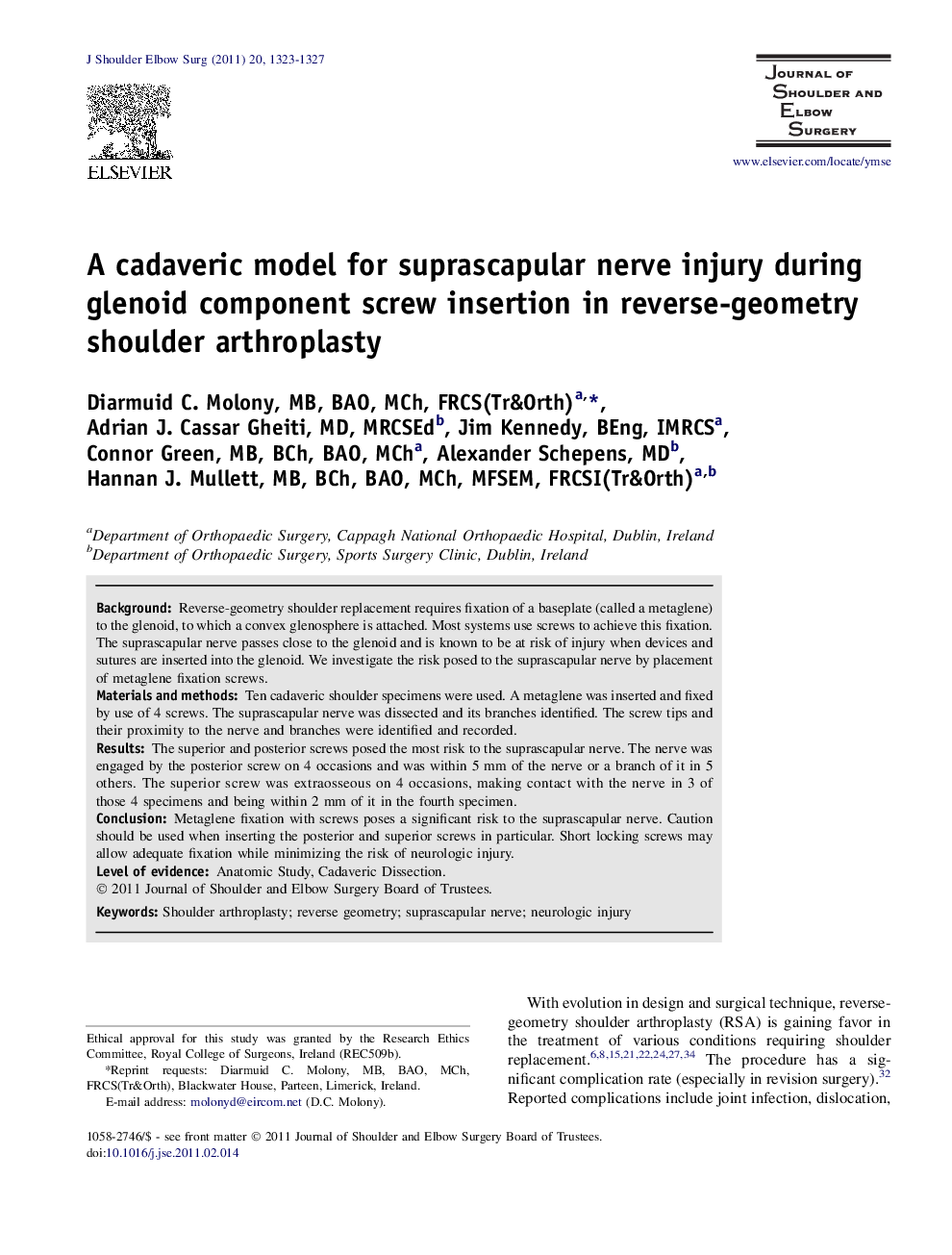| Article ID | Journal | Published Year | Pages | File Type |
|---|---|---|---|---|
| 4075683 | Journal of Shoulder and Elbow Surgery | 2011 | 5 Pages |
BackgroundReverse-geometry shoulder replacement requires fixation of a baseplate (called a metaglene) to the glenoid, to which a convex glenosphere is attached. Most systems use screws to achieve this fixation. The suprascapular nerve passes close to the glenoid and is known to be at risk of injury when devices and sutures are inserted into the glenoid. We investigate the risk posed to the suprascapular nerve by placement of metaglene fixation screws.Materials and methodsTen cadaveric shoulder specimens were used. A metaglene was inserted and fixed by use of 4 screws. The suprascapular nerve was dissected and its branches identified. The screw tips and their proximity to the nerve and branches were identified and recorded.ResultsThe superior and posterior screws posed the most risk to the suprascapular nerve. The nerve was engaged by the posterior screw on 4 occasions and was within 5 mm of the nerve or a branch of it in 5 others. The superior screw was extraosseous on 4 occasions, making contact with the nerve in 3 of those 4 specimens and being within 2 mm of it in the fourth specimen.ConclusionMetaglene fixation with screws poses a significant risk to the suprascapular nerve. Caution should be used when inserting the posterior and superior screws in particular. Short locking screws may allow adequate fixation while minimizing the risk of neurologic injury.
